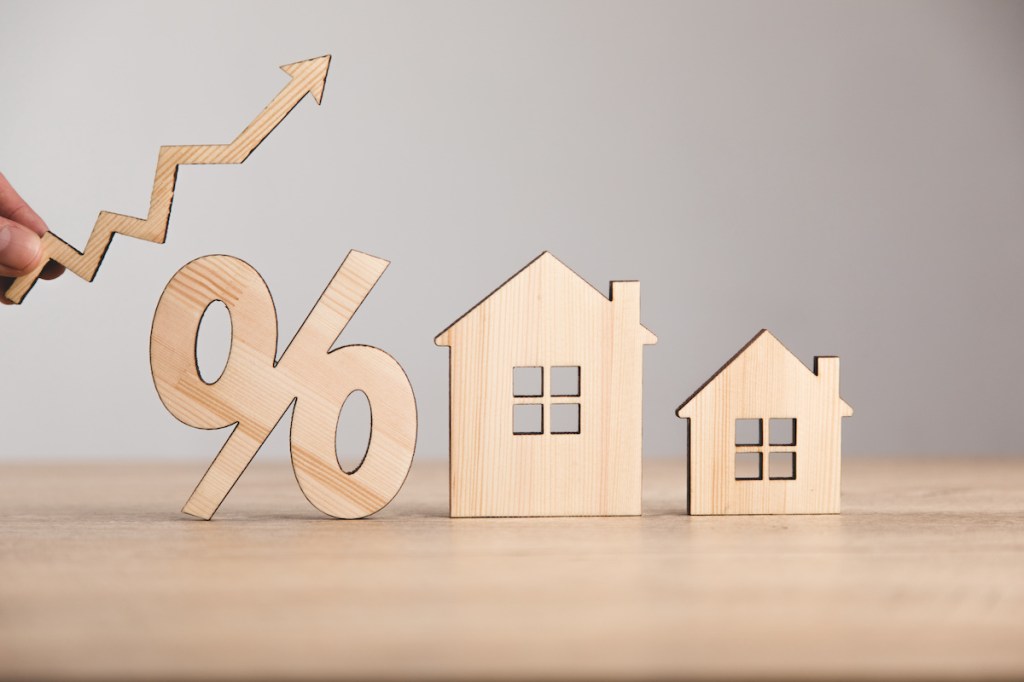Home-price growth nationwide downshifted further in May, posting a 19.7% annual gain, compared with a 20.6% increase in March and a 20.4% jump in April, the latest S&P CoreLogic Case-Shiller Home Price Indices report shows.
The report’s 10-City Composite Index recorded an annual increase of 19%, down from 19.6% the prior month. The 20-City Composite Index posted a 20.5% annual gain, down from 21.2% in April.
The highest year-over-year gains in May among the 20 cities were posted by Tampa, 36.1%; Miami, 34%; and Dallas, 30.8%.
“Housing data for May 2022 continued strong, as price gains [nationally] decelerated slightly from very high levels,” says Craig J. Lazzara, Managing Director at S&P Dow Jones Indices.
The U.S. National Index recorded a month-over-month increase of 1% on a seasonally adjusted basis. The 10-city and 20-city composites each posted monthly gains of 1.3%.
Only four of the 20 metro areas tracked, however, posted annual price increases that were higher in May, compared with April.
How auction buyer data foreshadows housing market shifts
The retail housing market data, released by Redfin at the end of June, shows the median asking price for newly listed homes for sale in the four weeks ending June 26 dropped 1.5% from an all-time high in the previous month even while a record share of all homes for sale saw price drops.
Presented by: Auction.com
“At the city level, we also see evidence of deceleration,” Lazzara added. “Price gains for May exceeded those for April in only four cities. As recently as February of this year, all 20 cities were accelerating.”
The S&P CoreLogic Case-Shiller U.S. National Home Price Index is a leading measure of housing prices. It tracks the value of single-family housing nationwide, while the 10-city and 20-city composite indices track single-family home values in select metro areas.
Lazzara said the cost of a mortgage is rising as the Federal Reserve continues to bump up interest rates. “Accordingly, a more-challenging macroeconomic environment may not support extraordinary home-price growth for much longer,” he concluded.
Another report released Tuesday by the Federal Housing Finance Agency (FHFA) shows housing prices nationwide posted a 1.4% monthly gain in May, compared with a 1.5% gain in April. For the 12 months ending in May, the FHFA House Price Index was up 18.3% — compared with a 19% annualized gain in March and an 18.8% increase in April.
“House prices continued to rise in May, but at a slower pace,” said Will Doerner, supervisory economist in FHFA’s Division of Research and Statistics. “Since peaking in February, price appreciation has moderated slightly. Price growth continues to remain above historical levels, supported by the low inventory of properties for sale.”
As HousingWire recently reported, several leading housing-market economists project the deceleration in home prices will continue in near the future as homebuyer demand decreases in the wake of fast-rising rates — with one economist even suggesting prices could decline slightly in some particularly hot markets across the nation.
“Housing demand weakened noticeably as growing concerns about affordability contributed to non-seasonal declines in sales, resulting in a slight increase in inventory and more moderate price appreciation,” according to the Federal Reserve’s most recently released Beige Book report — based on data and reports current as of mid-July.
The Beige Book reports, published eight times a year, are based on interviews with bank directors, business and community organization leaders, economists, market experts and other sources.
“May marked the first month of the year (in several years) where interest rates floated above 5%, and the elevated rates helped to noticeably pull back price growth as affordability continues to wear on homebuyers,” Zillow economist Nicole Bachaud said, reacting to the Case-Shiller report. “Annual price growth decelerated in May, now below 20% … and is likely to continue as affordability challenges persist.
“Slowing price growth is a reflection of changing tides in the housing market. Sales volume has slumped, inventory is on the rise and homes are spending more time on the market,” Bachaud continued. “… The housing market is undergoing a sea change that appears to have rendered the days of historic price growth as a thing of the past.”





